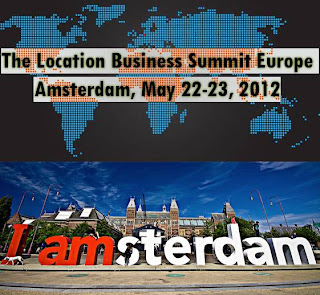
#Insights
The Location Business Summit Europe, Amsterdam – May 2012

I’m glad to say that Geo-awesomeness blog became a media partner of The Location Business Summit Europe 2012. It’s the must attend conference for the location and mobile marketing industry in Europe!
It is a fact that many companies are struggling to monetize their Location-Based Services and this might be the answer to many problems due to exchange of knowledge and networking with top Mobile/Geo/LBS professionals.
It is a fact that many companies are struggling to monetize their Location-Based Services and this might be the answer to many problems due to exchange of knowledge and networking with top Mobile/Geo/LBS professionals.
Speakers from companies including Google, Starbucks, Heineken, PayPal, Vodafone, Nokia and Living Social among others seem to be enough to encourage you to join.
Additionally quote GEOAWESOME and get €100 off any ticket price.
Additionally quote GEOAWESOME and get €100 off any ticket price.
#Insights
#Ideas
#Insights
Plenty of Elevation Models – What’s the Difference?
#Ideas
#Insights
#Science
#Space
What is GNSS and How Does GPS Actually Work?





